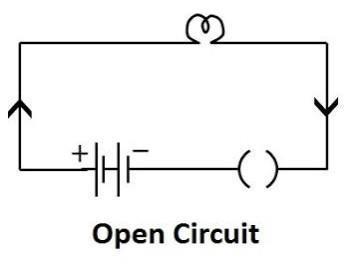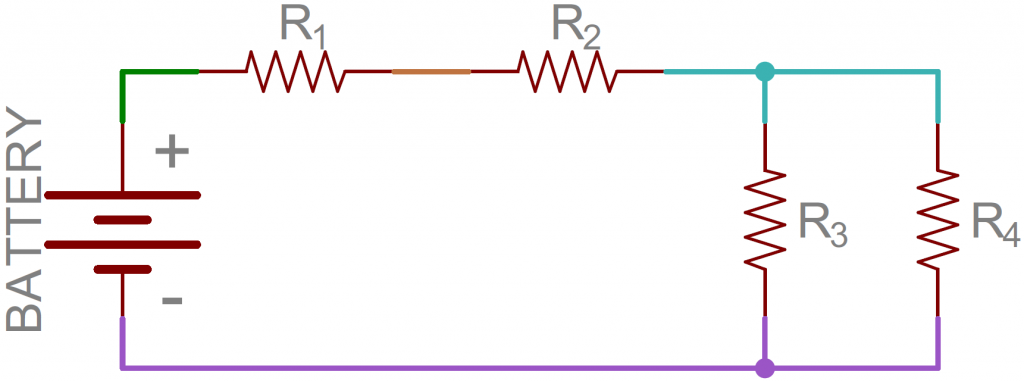Electric Circuit
Electric Circuit :
What is Electric Circuit?
The interconnection of various active and passive components in a prescribed manner to form a closed path is called an electric circuit. The system in which electric current can flow from the source to the load and then back to the other terminal of the source is referred to as an electric circuit. The main parts of an ideal electric circuit are:
- Electrical sources for delivering electricity to the circuit and these are mainly electric generators and batteries
- Controlling devices for controlling electricity and these are mainly switches, circuit breakers, MCBs, and potentiometer like devices etc.
- Protection devices for protecting the circuit from abnormal conditions and these are mainly electric fuses, MCBs, switchgear systems.
- Conducting path to carry electric current from one point to other in the circuit and these are mainly wires or conductors.
- Load.
Thus, voltage and current are the two basic features of an electric element. Various techniques by which voltage and current across any element in any electric circuit are determined is called electric circuit analysis.

In the above figure, it shows a simple electric circuit containing
- A battery of 3 V
- A carbon resistor of 15kΩ
Due to this, a current I, flows in the circuit and a potential drop of V volts appears across resistor.
Basic Properties of Electric Circuits
- A circuit is always a closed path.
- A circuit always contains at least an energy source which acts as a source of electrons.
- The electric elements include uncontrolled and controlled source of energy, resistors, capacitors, inductors, etc.
- In an electric circuit flow of electrons takes place from negative terminal to positive terminal.
- Direction of flow of conventional current is from positive to negative terminal.
- Flow of current leads to potential drop across the various elements.
Types of Electric Circuits
The electric circuit can be categorized in three different ways
- Open circuit
- Closed circuit
- Short circuit
Open Circuit

Closed Circuit
If there is no discontinuity in the circuit and current can flow from one part to another part of the circuit, the circuit is said to be closed circuit.

Short Circuit
If two or more phases, one or more phases and earth or neutral of AC system or positive and negative wires or positive or negative wires and earth of DC system touch together directly or connected together by a zero impedance path then the circuit is said to be short circuited.

Electric circuits can be further categorized according to their structural features into either:
- Series Circuits
- Parallel Circuits
- Series Parallel Circuits
Series Circuit
When all elements of a circuit are connected one after another in tail to head fashion and due to which there will be only one path of flowing current then the circuit is called series circuit. The circuit elements then are said to be series connected. In the series electrical circuit, same current flows through all element connected in series.

Parallel Circuit
If components are connected in such a way that the voltage drop across each component is same then it is known as parallel circuit. In parallel circuit the voltage drop across each component is same but the currents flowing through each component may differ. The total current is the sum of currents flowing through each element.
An example of a parallel circuit is the wiring system of a house. If one of the electric lamp burns out, current can still flow through the rest of the lights and appliances.
In a parallel circuit the voltage is the same for all elements.
When the resistors are connected in parallel:

When the inductors are connected in parallel:

Total inductance of non-coupled inductors in parallel is equal to the reciprocal of the sum of the reciprocals of their individual inductances.
When the capacitors are connected in parallel:
Ctotal = (C1 + C2 + C3 + C4 + ……………………….. + Cn)
The capacitors connected in parallel acts as series combination. The total capacitance of capacitors in parallel is equal to the sum of their individual capacitance.

Series Parallel Circuit

Read article – Units of Resistivity
Visit NCERTplanet.com for NCERT solutions and Textbook downloads



